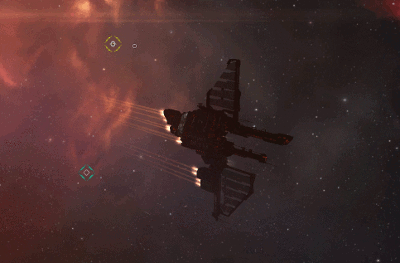

We have, in conjunction with Team Superfriends and as a side-effect of other work, made it harder to rapidly determine exactly what classes of site are present in a given system. We've changed the way that information about new sites appearing in a system can be accessed, which is particularly relevant in wormhole space. We have, for example, changed the gate-jump process to include an extra, non-blocking step: the overlay running a quick scan sweep in the new system to give you a glimpse of what might be hiding in deep space. In order to integrate this functionality smoothly into the existing tools, we've made a number of decisions that change elements of EVE. You also have access to the options to ignore sites in the probe scanner from the overlay icon context menu.
#Eve online sensor overlay update#
Finally when you have a perfect hit we update the location and enable the warp and save location buttons on the overlay site hints. The signal gets better and the name and faction gets filled as appropriate. In addition we update the icons in the sensor overlay as you improve your scan results. When you open the map with the probe scanner window active in a new system, even with no probes deployed, you immediately see the anomalies as green warpable results and the signatures as red spheres indicating their approximate locations. This allows us to retain a list view of all the sites and also gives us an interface to view all the sites in the solar system map as results from the probe scanner. To begin with we are priming the probe scanner with all the anomalies as well as crude signature results that you can view in the probe scanner result list right after jumping into a new solar system. At the end of the sweep there are also different sounds depending on whether we found something or not in the solar system we just entered, so you don’t necessarily need to pan around to learn of the presence of sites or not.Īs this feature is intersecting the probe scanning mechanics as well as serving as an introduction we have tried to integrate these features a bit. In addition there are spatialized sounds triggered when the sites are revealed along with the scanner button flashing white.

During the sweep the scanner button in the ship HUD will light up and animate showing the nice little scanner spin around in sync with the scan sweep. Now I say estimated because for the signatures these locations are wildly inaccurate and need to be scanned down using scanner probes. The sweep will reveal all the cosmic anomalies and signatures present in a system as the sweep passes over their estimated location in space. An automatic sensor sweep will take place stretching across your space view moving horizontally. You will first notice the sensor overlay moments after you enter space in whatever vessel you have decided to take for a spin whether it be a pod or a the fancy new and mysterious Gnosis. As with every feature, there's a bunch of additional things that we'd like to do with it in future, but as it is right now we're pretty happy with how it's turned out.Right, now that we have gotten that out of the way we can take a look at how the sensor overlay actually works. It's been designed and implemented in a way that lends itself to future extension, but equally can stand on its own as a finished product. Where we've ended up for this initial release is a feature that's mechanically light-weight, ever-present but - hopefully! - smoothly integrated with existing play flows, and visually and thematically attractive. We also knew that we wanted something that could be discovered without prompting during the natural course of play that it had to have a proper sci-fi feel and that we wanted to avoid increasing, and hopefully even decrease, the game's overall complexity without sacrificing sophistication. We fairly quickly homed in on creating a simple, visual tool to give characters a sense of what's out there, and to set them off on the path to finding their first "jackpot" moment. Our initial goal with this feature was to give neophyte explorers (of all character ages!) a less disjointed pathway into exploration. If you're unfamiliar with the probing system it's extremely unlikely that you'll ever find this content, and even if you do know about the necessary tools in principle, you still have to do a lot of scanning (or a lot of wiki-reading) to figure out what's actually out there. There's a wealth of content hidden out among the stars, and other teams have been working on improving that content and the surrounding tools, but it all relies on you knowing to launch some probes to track it down.

So as part of the overall "exploration" package for Odyssey, we (ie Team Five 0, with UI-design direction from CCP Sharq) were tasked by CCP Seagull with creating a feature to make exploration more organically accessible.


 0 kommentar(er)
0 kommentar(er)
